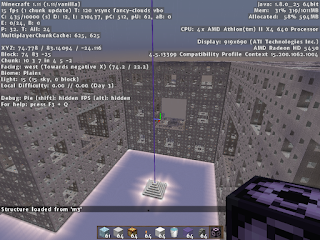In the news
recently, we see the story of Doug Herrmann. Doug is a father from
Ohio who out of frustration with his child's math homework, wrote a
check using common core methods. He was frustrated because he was
unable to understand what the school was teaching his son, and
therefore was unable to help his son with his math homework.
The ten card system that his “viral” check picture was intended to highlight is not a terrible method of mental math. One exception is that for some
it abstracts the idea so far that it seems to become separate from
the actual “math”. Utilizing grouping techniques is in no way a
“bad” technique to understand mental math. However, it becomes a
problem if too much emphasis is placed on a single rigid method.
Using the ten card
system is one of many useful techniques for understanding grouping.
We only run into problems when the standardized testing systems force
children to “believe” there is only one right way. The testing
should only test for the ability to solve problems and not for the
strict adherence to a single “correct” way of getting there. The
practice tests I have looked at appear as though they are actually
structured that way. The second grade tests do emphasize place
value, but do not seem to indicate a single method. Now as far as the
rigidity of the teachers, I have not seen how this comes into play. I
do know that in many instances students fall behind due to teachers
being too strict in the techniques that you use.
Please understand
that I am well aware that there has been a rising trend in math
illiteracy. I am not completely blasting common core. I , along with
other parents, have some questions about the implementation and
flexibility of these standards.
Some questions I
have include:
-
How are
conflicts between common core, and how the parents teach their
children handled ?
-
Is there an
awareness of the different ways people understand concepts ?
These questions go
beyond just common core. The rigid adherence to single techniques has
long been the culprit behind the fall in mathematics education.
On a personal
note, I have been a victim to the rigidity of teachers. When I was in
high school(many years before common core) I failed a math class
simply due to my teacher not approving of my mental math techniques.
To be fair, I would like to emphasize the math teacher was not
actually a math teacher, she was a soccer coach moonlighting as a
math teacher due to a poor student teacher ratio.
The conflict arose
when I was forced to show my work(and by show my work I mean that my
teacher wanted to see the remedial addition, subtraction,
multiplication, and division) This was an algebra class, where
showing your work meant to show the steps taken to simplify the
expressions. However, this instructor insisted we not just show that
we had to multiply she wanted to see the actual steps we took to
multiply. I thought this was odd in an algebra class, because
learning to multiply was second grade. However, I did comply and
attempted to be verbose with “showing my work”. However, my
method of “long hand” multiplication was different from what she
was taught. Most people are taught the “only” way to multiply is
to start in the one column and carry and borrow and all these other
concepts. I used a more “short hand” method which lends itself
well to mental math. I would start with the highest power of ten
column and work left to right instead of right to left. For example
if I were to multiply two digit numbers I would start in the tens
column and multiply no need for carrying and borrowing. You are just
simply adding up zeros. This method isn't understood by all, but it
was how I understood numbers and place value. Unfortunately, my math
teacher was strict and rigid in how she wanted it done and failed me
on all of my quizzes. I understood the algebra part and understood
the basic calculations part, and arrived at the correct answer. I
just applied a different method for the basic calculations.
Now my story is
sadly similar to many other students. For most, these situations
reinforce their frustrations with mathematics. It can quickly lead
students to make snap judgments about the efficacy of learning and
understanding math. They soon start to see math as a foolish endeavor
with rigid methodologies not worth their time. Or they could simply
just give up believing they will never understand and struggle to
merely pass.
I don't exclusively
place the blame on teachers for the problem of rigidity. The parents
also hold a share of the blame. As with the “common core check guy”
Doug Hermann and some of the comments on his posting, they also find
themselves rigid in their understanding. Simply not understanding a
technique of solving a problem does not condemn it. Rather, it simply
means you should probably learn more about it before condemnation.









































